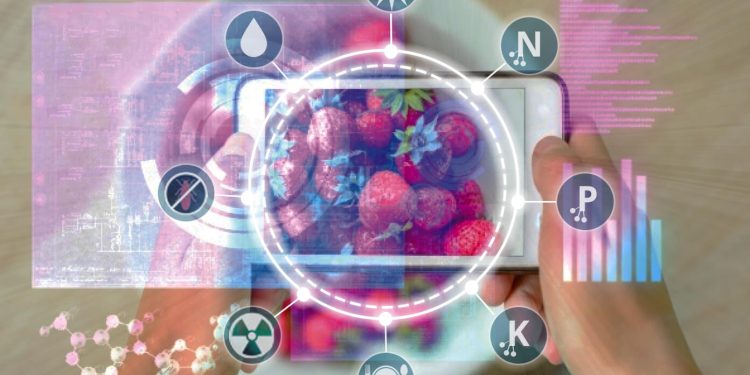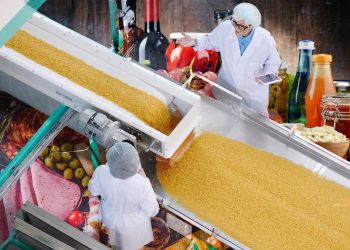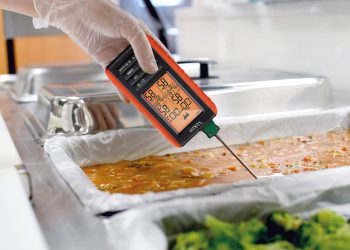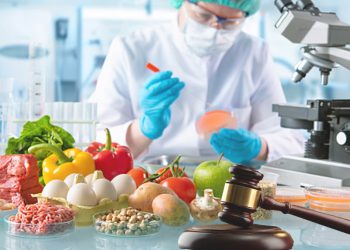After two unprecedented years of remarkable innovations and human endurance and resilience, 2022 is shaping up to be a unique year for the food and beverage industry. Propelled by the need for more transparency, hygiene, and superior consumer experience on the one hand and long-term sustainability on the other, several new trends will be driving the food and beverage industry in 2022. In this article, we explore the most significant ones.
Plant-based foods:
Although vegetarian, vegan, and flexitarian diets were already on the rise due to concerns about the ethical treatment of animals and planet sustainability, the covid-19 pandemic fueled this trend. In a recent survey of more than 1000 adults, nearly 18% of the respondents said they turned to a plant-based diet since the beginning of the pandemic in March 2020. The factors leading to the rise of this trend during the pandemic were:
- Concerns over the hygienic quality of meat products.
- Meat supply chain disruption.
The survey further indicated that this trend is likely to continue even after the world returns to normalcy. Nearly 29% of the respondents said they would consider reducing their meat consumption, adopting a more flexitarian approach.
Keeping this trend in mind, 2022 is shaping up to be all about plant-based eating. From the innovation of real meat from plants, hybrid meat-veggie foods, cell-based foods to animal-free dairy, plant-based foods are poised to become the true hero of our plates. Its value is expected to reach $118bn by 2030.
Sustainability-based consumption
Sustainability is slated to become a significant trend in the present scenario. The push for sustainability is increasing around the F&B industry, with several big F&B companies, like Pepsico, aiming to eliminate the use of plastics from their branded bottles in several countries by 2022. Striving towards achieving a sustainability-driven economy, another big trend will be F&B companies prioritizing environmentally-sound packaging. More companies will be creating compostable packaging in the coming years.
Another sustainable packaging solution that will make waves this year is antimicrobial packaging, which can help minimize food wastage by preventing microbial growth. Companies are even looking to create packaging solutions effective against viruses like COVID-19.
Direct-to consumers markets
Digitalization has slowly changed consumption patterns over the years. One of the significant trends triggered by digitalization is direct-to-consumer markets. Despite complicated logistic processes and increasing consumer expectations, direct-to-consumer marketing will be one of the major trends in the F&B sector. The trend that was previously accelerated by the COVID-19 pandemic is likely to continue in 2022 and beyond because the consumers have gotten used to the convenience of it.
The trend is so significant today that from F&B giants like PepsiCo and Kraft Heinz to smaller businesses, all are capitalizing on this trend. If you are an F&B company looking to benefit from the Direct to Consumer model, here are a few expert tips to consider:
- Collect as much consumer data to personalize the customer experience and monetize the relationship further.
- Maximize your brand awareness by directly reaching out to your customers and soliciting their feedback.
- Focus on personalizing your offerings to improve customer experience.
- Choose an intelligent warehousing partner to enjoy a reliable fulfillment process.
Meal Kits
The meal kits industry has flourished over the past few years and is expected to be worth $11.6 billion by 2022 in the U.S. alone. Fuelled by the pandemic, increasing need for convenience, and awareness regarding consuming more nutritious food, this trend has shown impressive growth over the past few years.
Spending on meal kits and grocery boxes increased by 114% in 2020 compared to the previous years.
The pre-made meal kits provide niche diets and adhere to various lifestyle choices.
Both retail grocers and foodservice operators today uphold the responsibility of delivering these convenient and nutritious meal kits to consumers. Driverless tech providers like Motional and Uber Eats are using innovative delivery solutions in this food delivery segment to help consumers hold onto a healthy lifestyle in their busy work schedules.
Robot cooks
Cooking robots is a new concept that quickly picked up as virus-wary F&B businesses tried to find solutions to keep consumers safe. Explicitly designed for cooking, such robots are built with food-grade materials that do not contaminate the food. These robots can be collaborative robots with multiple functionalities or single-arm robots, like SCARA. Equipped with advanced technologies, such as AI and machine learning, these robots can be used in both cooking and delivery activities. For example, A robot, dubbed Flippy, can cook french fries and other foods.
TUG is a delivery robot that delivers patient meals at Reading HealthPlex, Pennsylvania. This trend, triggered by the need for greater efficiency and stricter regulations, may soon result in semi-automated restaurants, freeing employees for other essential tasks and minimizing contact.
ERP for the Food&Beverage industry
The F&B industry is evolving pretty fast and increasingly becoming complex due to changing consumer demands and technological advancements. The growing complexity and pressures for innovation can be managed with investment in ERP software systems. Food ERP can help with many tasks ranging from quality control, complying with regulations to forecasting, planning, inventory, logistics, and production. For example, AI-powered ERPs can scan vast amounts of data to offer helpful market insights to F&B businesses to precisely predict customer demands and make decisions to minimize food wastage. AI-based ERP systems can also help F&B companies identify and optimize the supply delivery schedules to improve productivity while lowering costs. The predictive analytics capabilities of AI can predict changes in customer preferences and demand surges to take actions accordingly.
In 2022, more and more F&B businesses will adopt ERP solutions, which will cause the F&B ERP solution providers to evolve their offerings further to support a broader range of complex functionalities.
Final words
Consumers are increasingly becoming aware of the impact our food consumption habits have on our health and the environment. This is reflected in the trends described in the article. F&B manufacturers who can capitalize on these trends to create products and meet consumer demands will be best positioned to become successful in an increasingly competitive and complex space.







